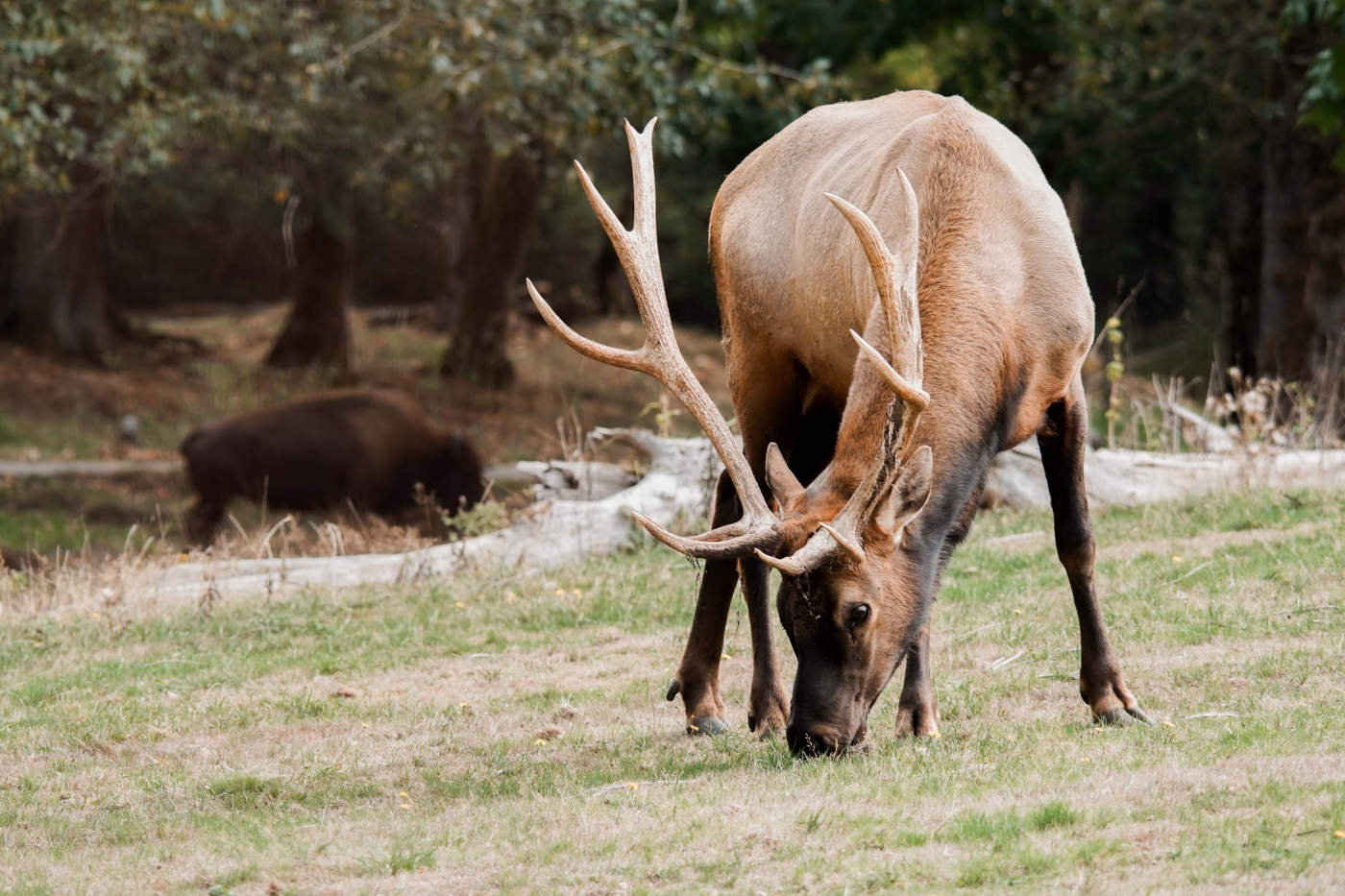Common name: American Elk
Scientific name: Cervus canadensis
Conservation Status: Least Concern
At the zoo: Manoah (14y), Bridget (18y), and Briar (18y), can be found in our North American Wilds enclosure at the back of the zoo.
Habitat:
American Elk live primarily in western North America (with some smaller eastern populations), from south-western Canada to New Mexico.
Diet:
Leaves, roots and tubers, wood, bark, stems, bryophytes, and lichens.
Life Expectancy:
25 years
Biology:
American Elk are the largest of the elk family, weighing up to 500 kilograms. Every spring, male elk begin to grow a new pair of antlers. While the antlers grow, they are covered with a thin velvet. By late summer, the antlers are hard and begin to shed their velvet. In the winter, the antlers get hard near the skull and fall off. On a mature bull, the antlers can reach 1.2 m above its head and weigh over 36 kg.
Male and female elk live in separate herds until the fall mating season. During the mating season, a male brings together his own herd of females, known as a harem, and protects it carefully from other males. Each cow typically has a single calf, which can stand within one hour of its birth.
Wilderness preserves and parks are essential in protecting the American elk from habitat loss and poaching.
Fun Fact:
Did you know that a summer herd of elk can be as many as 400 individuals!





